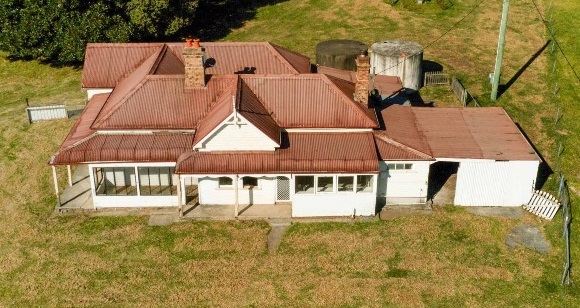
Cleary Bros Albion Park Quarry is located on the site of 'Belmont'. Prior to removing the residence and related relics, Cleary Bros undertook 3D modelling and drone scanning of the residence and surrounds, so that 'Belmont' could live on in the local community.
This Heritage Interpretation Plan aims to allow the community to connect with and understand part of the local heritage of the Shellharbour district.
'Belmont' (also spelled 'Bellmont') is a timber framed and clad farmhouse, built in 1904, with a series of more recent additions and alterations. These are part of the history, or evolution of the building and each part tells a story that we can now interpret.
The house was built by Walter Dunster in 1904 using local builder Tommy Whitfield (who built a lot of the local farmhouses), after he bought the surrounding property in 1900, which forms part of 'The Hill Farm Complex' on what is known locally as 'Dunster's Hill' or 'The Hill'. The house was originally named 'Wahroonga'.
The was sold to Samuel and Jane McDonald (nee Bell) in 1912, who then renamed the house 'Bellmont'. References to the property as named 'Belmont' appear at a later date.
Or Click here to access model in a new window.
A User Guide has been prepared to assist new users to explore the interactive mode. Click here to open the User Guide.
Click here to see a multimedia presentation showing how 'Belmont' and the Dunmore Hills landscape has changed over time, including a brief guided tour of 'Belmont'.
An Archival Recording of the 'Belmont' was also prepared prior to, during, and following the demolition of the 'Belmont'. Click here to access the Archival Recording.
‘Belmont’ can be described as a large, for its time, dwelling with a simple rectangular floor plan, that includes a central East West corridor, with mainly bedrooms and service areas eg storeroom and bathroom located south of the corridor and living areas located to the north. Victorian families were often quite large and farming was a labour intensive activity for the whole family. Early morning and afternoon milking was carried out 7 days a week.
As ‘Belmont’ was built in 1904 (The Hill diary), it historically falls into the Edwardian period (Queen Victoria reigned from 1837 to 1901; her successor, King Edward, reigned from 1901 to 1910).
Confusingly, the 'Victorian period' of Australian architecture is generally held to be from 'circa 1840 to circa 1890'), which results in the Heritage Office data sheet for ‘Belmont’ referring to ‘Belmont’ being 'a Victorian Edwardian cusp era weatherboard farmhouse', being perhaps, in between these two eras.
The Edwardian period in Australia can be seen as a stylistic continuation from the previously very strongly influential Victorian period (except in the case of some major projects), and in addition, the development of the more popular and influential Australian Federation Style (which was seen as more 'patriotic') tends to reduce the impact of any purely Edwardian style in Australia. The Australian Federation style is generally held to have been in vogue between 'circa 1890 and circa 1915'.
While this is perhaps of academic interest, in a practical sense, it is more instructive to look at the actual building for evidence of a style.
‘Belmont’, is a large but comparatively simple example of a Victorian Farmhouse. There are many examples still existing throughout the dairying districts of the Illawarra and Shoalhaven. These farmhouses are often similar and in some cases identical farmhouses, found throughout these two regions, often quite widely separated, eg ‘Avondale’ (West Dapto) and ‘Narrawillee’, (Milton) are identical Georgian farmhouses.
Victorian era buildings are often considered to be associated with the confidence, progress and prosperity associated with the rise of the British Empire. Buildings of this period are often strong and confident in appearance as well as being highly decorated and often multicoloured.
Because this is a more practical 'working' building and not in a status conscious location eg a town main street, the appearance of this building is quite simple, although well proportioned. There is very little applied decoration, although the original colour scheme would probably have been more varied than the current white paint treatment to all elements except the roofing
It is very likely that builders would offer 'standard' plans which could be modified as required, but retained standardised dimensions and materials, in order to make costing and project control simpler.
The influence, popularity and selection of any architectural style in rural areas tends to lag behind urban areas, where the latest magazines, catalogues books and 'pattern books' of standard designs were more readily available. Similarly, there was a smaller local pool of skilled or specialist tradesmen, which encouraged simpler stylistic interpretations, techniques and finishes.
The opening of the Albion Park Railway Station in 1887, however allowed better transportation of building materials and goods. In the case of ‘Belmont’, lightweight materials including internal and external timber wall cladding, ceiling linings, both plaster and timber, timber windows, doors and trim as well as galvanised roofing could all be more easily and cheaply delivered to the site.
The European social and cultural history of the Shellharbour area relates the lives of a number of key pioneering families, their hard work, properties and descendants.
The Dunster Family have been in the Illawarra for more than 160 years. They are one of the oldest and most respected pioneering families in the district.
In 1819, in Stone, Kent, England, Joseph Dunster (1788-1861) married Mary Anne Randall (1799-1874). They had seven children between 1819 and 1835: Mary, Caroline, Sophia, Joseph, Charlotte, Walter and Humphrey, although Caroline died in 1825, aged 3. When the family of eight came to Australia in 1838, Joseph’s occupation was recorded as a shepherd. The Dunster family began life in the Illawarra at Avondale Farm, Dapto.
Their son, Joseph Dunster (1826-1877) married Jane Elizabeth Stratford (1835-1881) in 1856. Joseph was a storekeeper at Tullimbar between 1856 and 1865, as well as farming at River Farm, Tongarra. In 1865, the family became tenant farmers on part of the Bassett-Darley Estate which was originally granted to D’Arcy Wentworth. They took up residence in a slab hut known as 'Hope Villa' that was on the top of the hill in Shellharbour. This property became known as The Hill, Dunster Hill or Signal Hill. The Dunster family has lived at 'The Hill' for over 165 years. Between 1857 and 1874 Joseph and Jane had eight children: Sarah, Mary, William Charles, Joseph, Robert W, Jane Elizabeth, Charlotte and Walter.
Dunster descendants over the generations were active in many aspects of farming and civic life, as snippets such as these, show:
Around 1900, Walter Dunster (1873-1944) had bought property on the southern boundary of his parent’s property, 'The Hill'. In 1904 he built hay sheds, dairy yard and outbuildings and a homestead, which he called 'Wahroonga'. He moved in with his wife, Jane and their six children. The Dunsters lived there until 1912 when they sold the property to Sam Macdonald.
Links to Shellharbour Museum's database 'Discover Shellharbour':
Dunster Family https://museum.shellharbour.nsw.gov.au/dunster-family/
The Hill https://discovershellharbour.recollect.net.au/nodes/view/706
In the past, not much was recorded about women individually, because a woman’s place was in the home, bearing and raising children, keeping vegetable gardens and making meals and bread, assisting her husband, especially if they were new settlers or farmers without any other labourers to assist. In the earliest years of settlement, women and children formed a significant workforce in farming. On the dairy farm they milked cows, separated the cream, and churned butter by hand.
The Dunster women made important contributions, often in the background, to their husbands, families and communities, although their stories remain untold, but there are a few we know something about. Hilda Dunster married Hector Fraser, and farmed with Hector at Brushgrove at Albion Park, later moving to ‘Seaview Farm’ at what is now Killalea Regional Park, where they continued dairy farming. Charlotte Dunster worked in, then operated, her husband Walter Allen’s shop and post office. Second cousins Nancy Laura Dunster and Eileen Jane Irving Dunster (known as Jane) became nurses. Matron Dunster Park at Wombarra recognises the valuable contribution that Jane Dunster, daughter of dairy farmer Walter Dunster and granddaughter of Joseph Dunster of 'The Hill', made to the hospital and local community in her work as Matron of Coledale Hospital.
Records show that some of the Dunster women married into other significant pioneering families in the Illawarra, including the James, Lindsay, King, Miller, and Musgrave families.
George McDonald was the eldest son of Samuel McDonald and Mary Hobson. George grew up in Mount Kembla and Albion Park before living for a short time at Robertson. From around the time of his marriage to Elizabeth Russell, they spent 15 years dairy farming in Cambewarra before moving to 'Marshall Mount House' in 1896. Elizabeth and George McDonald had five children, one of whom died young. George McDonald was a household name in the district, an elder of the Albion Park Presbyterian Church, as well as a preacher.
Frederick, one of George and Elizabeth’s sons, continued on at 'Marshall Mount House', after his father’s death in 1927. In 1912, their other son Samuel Hercules McDonald, with his wife Jane (nee Bell), bought a property from Joseph Dunster adjoining 'The Hill' in Dunsters Lane at Croom. Sam changed the name to 'Bellmont' after his wife, Jane Bell, and the McDonald family retained the property for many years.
Ebenezer and Janet (known as Jane) Russell, one of the earliest pioneers in the Shellharbour district, immigrated from Scotland in 1840 with their six children. Isabella Croker’s Croom Estate was advertised for sale in August 1840. Ebenezer purchased 1280 acres for 5 shillings an acre in 1852. Initially Ebenezer Russell grew crops of wheat and potatoes. He built a homestead, stables, flour mill and dairy, some of which survive today. Later, like much of the land in the area, the farm was converted to dairy production. Ebenezer and Jane’s descendants, the Hamilton, McGill, Russell, Mathie and McDonald families have carried on farming for generations in the district.
On Ebenezer’s death in 1866, John Russell, their eldest son, inherited much of his father’s property. Together with John’s own property, this made him the most prosperous man in the area, but he was a generous one. He purchased 146 acres, including 'Marshall Mount House', which he gave to his sister Elizabeth when she married George McDonald in 1871. John Russell donated 10 acres toward the creation of the Albion Park Showground, and gave significant funds for the Presbyterian Manse at Albion Park, the construction of the Presbyterian Church and Pioneer Presbyterian Cemetery at Albion Park. An alderman for Shellharbour Council from 1869-1879, John Russell was also a noted cattle breeder.
Isabella Russell, John’s sister, married James McGill in 1869, and they farmed ‘The Meadows’ in Albion Park until they moved to Stoney Creek in 1883. Isabella was known and respected throughout the area as being a good nurse and midwife. Her clever treatments during the diphtheria epidemic in the 1880’s was said to have saved many lives.
Links to Shellharbour Museum's database 'Discover Shellharbour'
Russell Family https://discovershellharbour.recollect.net.au/nodes/view/955
John Russell https://discovershellharbour.recollect.net.au/nodes/view/1909
Croom https://discovershellharbour.recollect.net.au/nodes/view/455
Marshall Mount House https://discover.shellharbour.nsw.gov.au/nodes/view/12605
Albion Park Showground https://discovershellharbour.recollect.net.au/nodes/view/1029
John Walter Allen (1827-1876), came to Australia from England in 1855 with his wife Priscilla and two children Richard and Walter, as an assisted immigrant. Priscilla died just three years after arriving in the colony, in 1858. Walter married Charlotte Dunster (1828-1882) in 1861.
In 1868, Allen established a general store in Addison St, Shellharbour, selling ironmongery, drapery and haberdashery. Clothing and other goods were available to buyers to order through catalogues. From 1871, Allen also ran a Post Office from the front room of their home next to the shop in Addison St, and a Telegraph Office followed. After his death in 1876, his widow carried on as shopkeeper and postmistress, assisted by other relatives in the Allen and Wickham families. The business continued in the family for a time after Mrs Allen’s death, but was sold in 1891.
Links to Shellharbour Museum’s database ‘Discover Shellharbour’:
John Walter Allen https://discover.shellharbour.nsw.gov.au/nodes/view/15859
Allen Bros Post Office Store https://discovershellharbour.recollect.net.au/nodes/view/608
Tucker Alarm Till Allen Bros Post Office Store https://discovershellharbour.recollect.net.au/nodes/view/11341
Alexander and Helen Fraser had arrived in 1839, and, like many other Scottish settlers, were given a clearing lease in Macquarie Valley (Albion Park). They had six years of free lease, on the condition that they cleared the land. They became renowned dairy farmers. Their son, John (1839-1901) farmed at 'Brushgrove', Calderwood, and made a significant contribution to the developing dairy industry, as well as to the district as a whole. He served as an Alderman (1871-1901) and Mayor (1875-1876 & 1880-1890) of Shellharbour Municipality.
John and Marion Fraser’s son, Hector (1873-1948), married Hilda Dunster (1887-1958) in 1912. They farmed at 'Brushgrove' and 'Tongarra' until 1923 when they moved to 'Seaview Farm'. Hilda changed the name of their dairy farm to 'Killalea', at what is now Killalea Regional Park, after the original family who had worked the farm from 1847.
Edward Killalea had been transported from Galway, Ireland, in 1836 for manslaughter. He and his wife, Maria, were granted a clearing lease at what is now Killalea Regional Park where they worked and contributed to the community until Edward died in 1872. Brothers James and Daniel Buckley farmed the property in the early 1900s until the Frasers took over 'Seaview Farm'. John McNevin Fraser (born 1920) later inherited 'Killalea' from his parents and continued to run a milking herd of 60 as well as 30 head of beef cattle. He sold 'Killalea' in 1956, but stayed on as property manager.
Links to Shellharbour Museum’s database ‘Discover Shellharbour’:
Fraser Family https://discovershellharbour.recollect.net.au/nodes/view/728
Killalea State Park History https://discovershellharbour.recollect.net.au/nodes/view/1294
In Dharawal Country in the 1840’s, the port south of Wollongong was originally called Peterborough. It became known locally as 'Shell Harbour', then Shellharbour, because of the number of shells there, associated with Aboriginal middens. As European settlers moved in, the land around the port was gradually cleared as farms and fields were established. Early crops included maize, potatoes, wheat, pigs and hens. From 1856, some butter, wheat, potatoes, eggs, fowl and pigs were taken to the harbour for shipment to Sydney. Over time, the development of a jetty and the deepening of the harbour helped make the steamship trade to Sydney market less dependent on tides and weather. In the 1850’s a village grew up around the port at Shellharbour in response to growing trade activity.
Links to Shellharbour Museum's database 'Discover Shellharbour':
First Nations https://discover.shellharbour.nsw.gov.au/nodes/view/14110
Shellharbour History https://discovershellharbour.recollect.net.au/nodes/view/955
Maps and Plans https://discover.shellharbour.nsw.gov.au/nodes/view/1240
The highest point in Shellharbour, ‘The Hill’, became known as Dunster’s Hill from 1865, as it was part of Joseph and Jane Dunster’s property. Through a telescope, the Dunster family kept a lookout for the ships approaching the port. When they saw a steamship, they hoisted a huge ball up the top of a large Moreton Bay fig tree outside their home. The Macquarie River settlers and others would be able to see the ball in the tree on the hill and this was the sign that it was time to take their produce to the wharf for transport to Sydney markets. Dunster’s Hill was also called Signal Hill because of the important role it had as a focus and for communication.
Links to Shellharbour Museum’s database ‘Discover Shellharbour’:
Draw-tube telescope used at The Hill https://discover.shellharbour.nsw.gov.au/nodes/view/5994
Dunster Family https://discovershellharbour.recollect.net.au/nodes/view/706
The dairy industry developed slowly at first in the Illawarra, starting with small scale family production. When wheat crops were destroyed by rust in the 1860’s, wheat growing was abandoned in the region, giving the dairy industry further impetus. Wheat was replaced by oats, barley and rye for green feed, with dairy herds to feed on it. Changed laws (Crown Lands Alienation Act 1861 and the Crown Lands Occupation Act 1861) in the 1860’s also encouraged more settlers to take up smaller dairy farms, but increased production didn’t mean a good price for butter. Many dairy farms were small, between 30 and 60 hectares in size, with an average herd of 30 cows, but some farms milked about 100 cows.
Dairying was hard work, and, in the early years, very basic. Milking was done twice a day, then cream was set in shallow pans. The following day in warmer weather, or maybe two days later in cooler weather, the cream was skimmed from the surface of the milk by hand, using ladles. It was then churned into butter in a hand-operated churn and packed into wooden cases, and taken by horseback or wagon to be transported to market. Women and children in the family did most of the milking and butter-making, taking up to four hours to milk 30 cows. The children’s hours of attendance at school, and absenteeism, were often dependent on the work they had to do at home, so the Principal of Kiama School applied to the Department of Education to alter his school timetable to fit in with dairy and farming demands of his students.
Links to Shellharbour Museum’s database ‘Discover Shellharbour’:
Dairying https://discover.shellharbour.nsw.gov.au/nodes/view/8858
Butter was first transported by small steamships to Sydney for sale. Ships ran from the ports of Wollongong, Shellharbour, Kiama and Nowra. If the sea was too rough for a ship to set off, or the tide too low for one to dock, this would delay transport. Early steamships took more than 30 hours for a round trip from Kiama. At times butter spoiled on the jetty or while in transport, especially during the summer months. When the railway opened in 1887, an efficient and reliable method of transport finally became available to local farmers which also gave them access to new mass markets. By that time, the dairy industry in the Illawarra had changed and matured, with the growth of butter co-operatives, the advance of production using more labour-efficient methods, and an increased interest in crossbreeding to create better quality of dairy cow.
In 1869 dairy farmers formed the Shellharbour Butter Export Company to help organise the sale of butter. Ten years later the invention of refrigeration assisted this further. Advances in technology, such as the development of a mechanical separator in Denmark, helped further to encourage the spirit of cooperation between dairy farmers. Mechanical separators required 1 gallon less milk to get the same amount of butter that hand-skimming produced, so the advantages of reduced work and increased production could be seen immediately. Farmers fed pigs with the skim milk leftover from separating, creating a new sideline of bacon for the dairy industry. By 1879, refrigeration was successful, and this made a significant difference to the growing dairy industry. Both these inventions were important in 1886 when the Dairy Supervision Act forced dairies to improve hygiene.
In October 1880, the South Coast and West Camden Co-operative was formed by a farmers meeting in Kiama. Their aim was to look after themselves and each other by taking the innovative step of co-operative marketing. This was an industry first in Australia. Steamers now worked regularly from Wollongong, Kiama and Shoalhaven on Mondays and Thursdays to take butter, bacon and cheese from the South Coast to the Co-op’s rooms in Sydney. Butter prices stabilised, and 743 farmers sold consignments of butter worth £125,000 in the Sydney market through the Co-op in the first, successful year. Within six years of its formation, the South Coast and West Camden Co-op had helped make dairy farmers in the Illawarra leaders in a new co-operative mode of production. Seven butter factories were clustered within a 20km radius, and most of them were co-operative. Farmers who weren’t part of the Co-operative could have their butter manufactured at a fair price. The money made went towards improving the Co-op’s plant and equipment.
The Pioneer Co-operative Dairy Produce Factory opened in Kiama in June 1884, the first co-operative dairy factory in Australia. By 1885 they had three Danish separators and had established an export trade to Britain. In response to high demand, by 1887 they had three separators and three churns.
A number of small butter factories grew to serve local farming communities in Albion Park, Tongarra, Yellow Rock, Dunmore, Unanderra, Dapto and Kiama. None of the small butter factories had refrigeration, so they took their butter to larger factories. Gradually the smaller factories closed as the larger ones took over.
In September 1899, the Illawarra Co-operative Central Dairy (ICCD) factory opened in Albion Park. It was built beside the railway line to give easy access for transportation to Sydney. Albion Park had become the centre of the rich local dairying industry. Fifty-one local farmers supplied the ICCD, which separated all surplus milk and used the cream for butter manufacture. Two steam engines drove the machinery and the refrigeration plant until 1903 when the factory installed its own steam driven electricity generator. Producing first Allowrie brand butter and then, from 1955, Warrilla butter, the ICCD was in production for 86 years.
On 15th January 1900, sixty-five stakeholders, mainly dairy farmers from Wollongong and Kiama, formed Dairy Farmers Co-operative Milk Co Ltd. They aimed to sell fresh milk and butter effectively to city customers. After beginning in the Illawarra, Dairy Farmers went on to expand into Sydney and Newcastle. It claims to have been the first company in Australia in the 1920’s, to move from selling milk by ladling it out of traditional 10-gallon cans, to the more hygienic and convenient practice of selling milk in bottles. Dairy Farmers Milk Co-op is still a co-operative enterprise today, after a number of changes in ownership over the years. Today it represents more than 250 dairy farms in Queensland, New South Wales, Victoria and South Australia.
Links to Shellharbour Museum’s database ‘Discover Shellharbour’:
The Illawarra Cooperative Central Dairy Factory https://discover.shellharbour.nsw.gov.au/nodes/view/494
Warrilla butter wrappers https://discovershellharbour.recollect.net.au/nodes/view/12468
The Illawarra Milking Shorthorn or the Illawarra Shorthorn, Australia’s own dairy cow, is recognised as one of the top breeds in the world today. It was originally bred from imported Longhorn Durhams, Shorthorn Durhams, Red Lincolns, Red Ayshires, Guernsey, Kerri Dexter, Friesian and Jersey bloodlines. An interest in creating and improving an Illawarra line of dairy cattle began the 1850’s, with more serious attention to crossbreeding and recording given to this from the 1860’s onward. Progress with the ‘district breed’ was regularly noted at the Albion Park Agricultural and Horticultural Show which was first held in 1888, although it wasn’t until 1912 that a section for ‘Illawarra Dairy Cattle’ at the show officially recognised the new breed.
This breed is now simply called Illawarra to prevent confusion abroad with other Shorthorn breeds. Characteristics of Illawarra cattle include producing large quantities of milk, many cows giving in excess of 40 litres of milk/day. The milk has a high protein and butterfat content and cows keep producing until their early teens. These cattle are very adaptable to climatic conditions, and have strong pigmentation which means fewer skin cancers. Illawarra cows have superior pelvic formation which makes calving easy. They are docile, with a good temperament. Illawarra cattle are used in both dairy and meat production. Live animals and embryos have been exported to Central America, United Kingdom, Pakistan, United States, New Zealand, the Pacific Islands, Canada, Korea, Japan, Indonesia and the Middle East.
Links to Shellharbour Museum’s database ‘Discover Shellharbour’:
Illawarra Cooperative Central Dairy https://discovershellharbour.recollect.net.au/nodes/view/1087
Shellharbour City Council Heritage Study Volume 2 Thematic History by Andrea Humphries & Anna London Nov. 2005 https://cdn.shellharbour.nsw.gov.au/sites/default/files/Plan_and_build_documents/thematichistory_1.pdf
(02) 4228 7333 Coniston - 8 John Cleary Place
Mon-Fri: 7:00AM - 5:00PM | Sat: 7:00AM -1:00PM
(02) 4256 1733 Albion Park - 81 East West Link
Mon-Fri: 7:00AM - 4:30PM | Sat: 7:00AM -1:00PM
(02) 4421 3944 Bomaderry - Bolong Road
Mon-Fri: 7:00AM-4:30PM | Sat: 7:00AM-1:00PM
(02) 4275 1000 Albion Park - 81 East West Link
(02) 4275 1000 Albion Park - 81 East West Link
(02) 4256 5566 Albion Park - 81 East West Link
(02) 4256 5566 Albion Park - East West Link / Gerroa - Beach Road
Application form
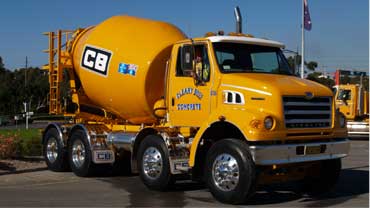
Whether you need concrete for a high-rise development or a residential home, a footpath or slab, we deliver at a competitive price and in good time.
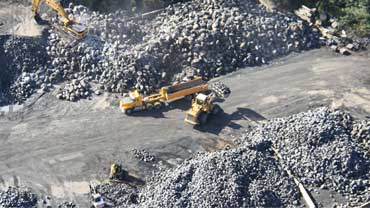
Cleary Bros has two quarries – Albion Park quarry for hard rock and Gerroa quarry for sand. Products are independently tested to ensure industry specifications are met.
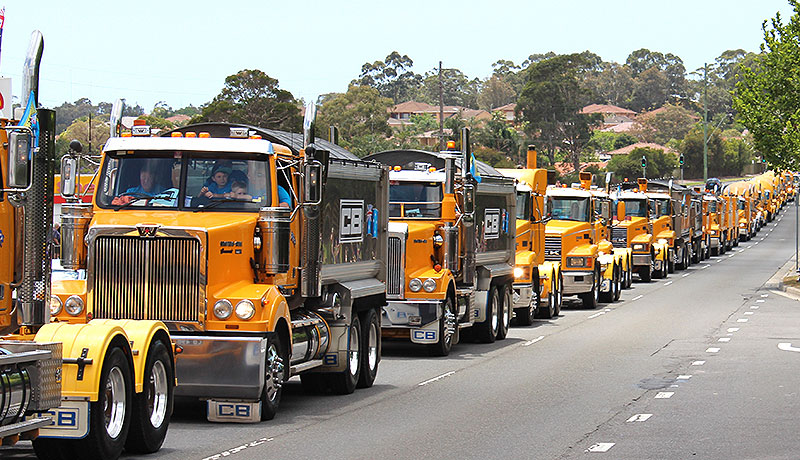
At Cleary Bros we understand the importance of a deadline. Our Transport Services division delivers supplies to construction companies on time, every time.
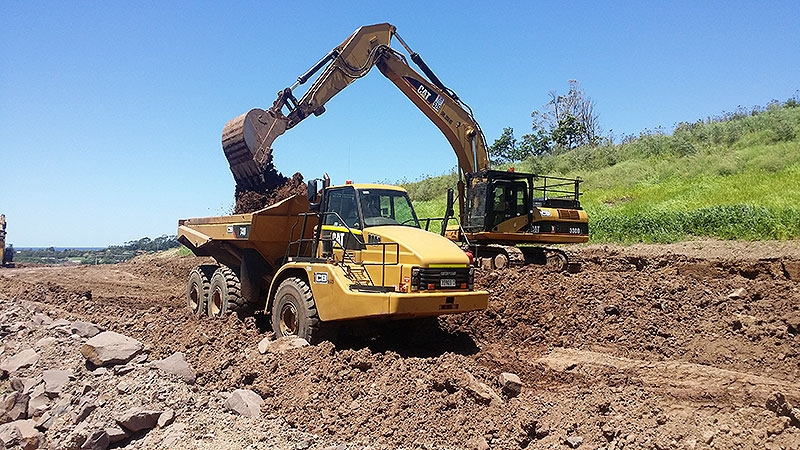
As one of Australia’s largest privately owned plant suppliers of earthmoving equipment, we hire dozers, graders, loaders, rollers, excavators, fuel trucks and more.
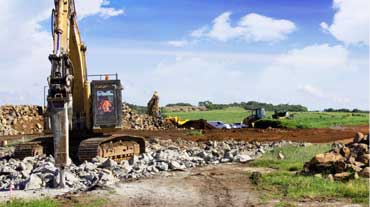
Works carried out by this Division include all facets of earthworks, sub-divisions, road works, bridge works, general infrastructure and civil construction.

Area Sales Reps work with our clients to get the best results for their projects and their details are located in 'Our People' section of the website.
Copyright © 2025 Cleary Bros. All rights reserved.